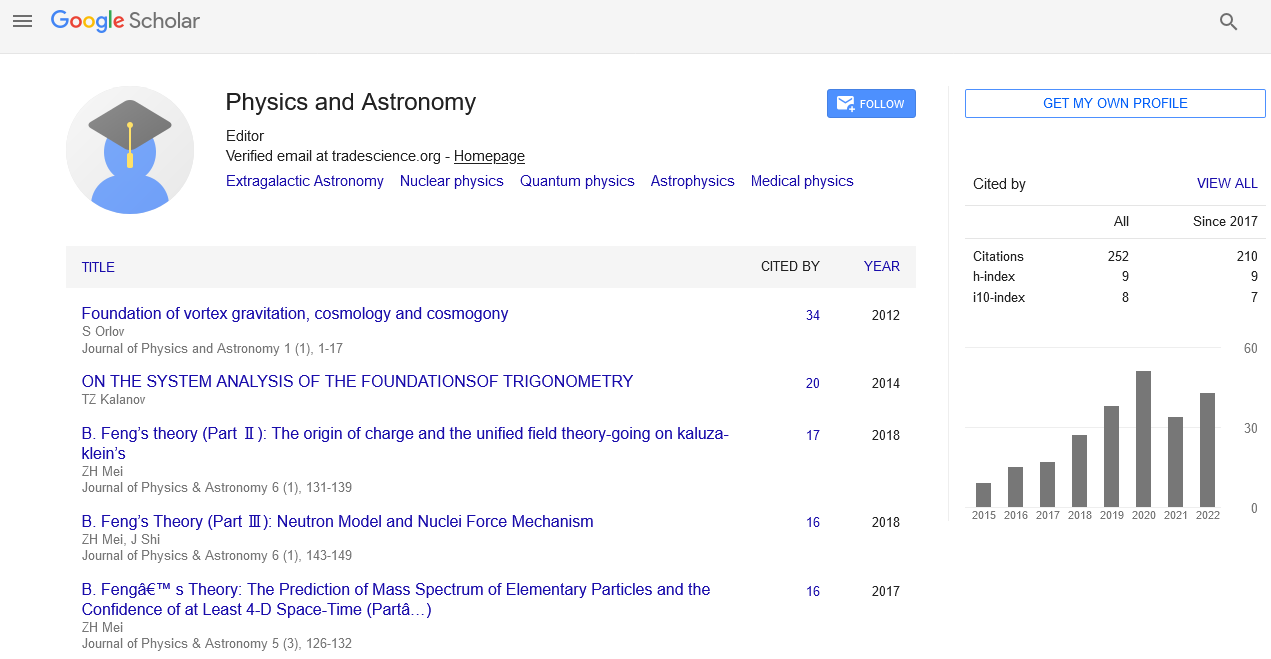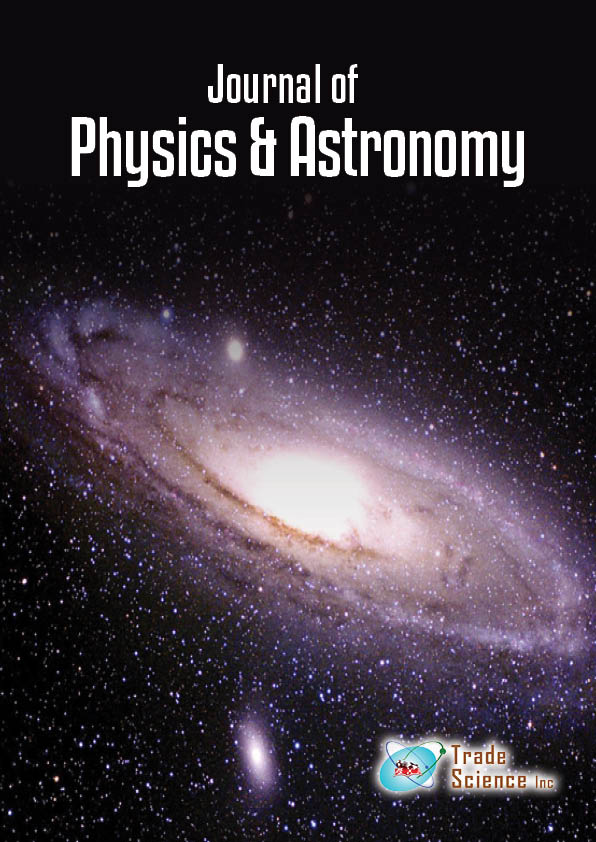Perspective
, Volume: 12( 11)The Iterative Solution of Taylor Formula for Partial Differential Equation
Received date: Oct-29-2024, Manuscript No tspa-24-153603; Editor assigned: Nov-02-2024, Pre-QC No. tspa-24-153603(PQ); Reviewed: Nov-05-2024, QC No. tspa-24-153603(Q); Revised: Nov-08-2024, Manuscript No. tspa-24-153603(R); Published: Nov-17-2024, DOI. 10.37532/2320-6756.2024.12(11).342
Citation: Gao Y. The Iterative Solution Of Taylor Formula For Partial Differential Equation. J Phys Astron. 2024;12(11):342.
Abstract
This paper discuss the relation between Taylor’s formula and partial differential equation. Taylor formula iteration method can resolve partial differential equation. u(x, t) be expanded at t = 0 or t = 1 by Taylor formula. Coefficient of Taylor formula ut(x, 0), utt(x, 0). . . can be expressed by partial differential equation. The method can solve nonlinear differential equation. Generalized Taylor’s formula can solve fractional partial differential equation. The method is very important way that resolving partial differential equation. The method also can resolve those equations from. This article refers to the literature. Taylor formula iteration method belongs to logical thinking.
Keywords
Taylor’s formula; Iteration method; Nonlinear; Partial differential equation
Introduction
This paper introduce that Taylor formula iteration method resolve partial differential equation. In this paper, six examples are used to introduce Taylor formula iteration method to solve partial differential equation. This paper also introduce that generalized Taylor’s formula can solve fractional partial differential equation. The iterative method of Taylor formula is an important and useful method to solve partial differential equation [1-6]. The solution of Taylor formula iteration method belongs to C∞ [7].
Variable Coefficient Problem
We consider equation as following:

We solve (1) by Taylor formula iteration method as following:

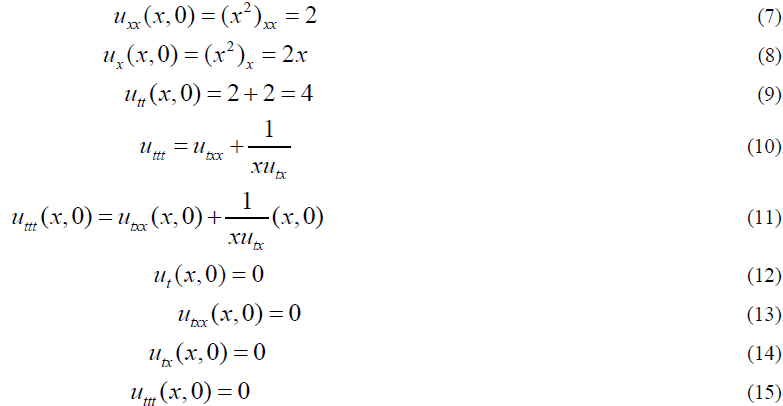
And we have:

By Taylor’s formula, we get as following:

Solution of equation (1)

Two Dimensional Heat Conduction Equation Solution
We study the equation as following:

Next, we solve (19) by Taylor formula iteration method,

Let t = 0 on (21),

On equation (21), finding 1-order partial derivative of t on both sides, we have:

Next, t = 0 on (23),

On equation (23), finding 1-order partial derivative of t on both sides, we have:

Next, t = 0 on (27),

So, we have:

By Taylor’s formula, we get as following:

Solution of (19),

The Third Problem with Boundary Values
We consider following equation:

By Taylor formula iteration method, we have:

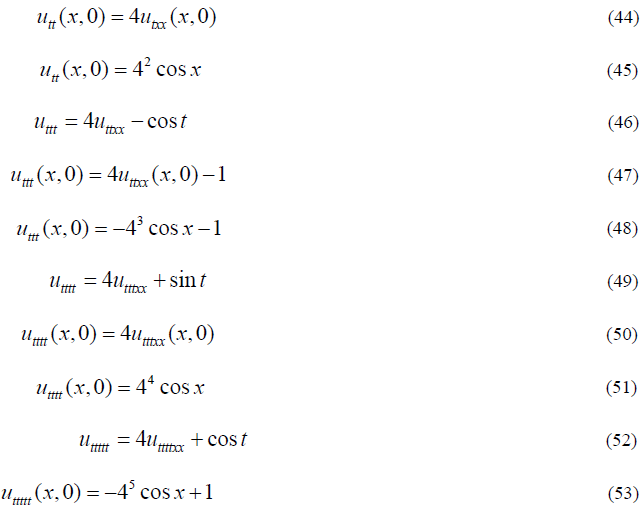
By Taylor’s formula, we get as following:

We have:

We take the best of Fourier expansion:

We get the solution of (38):

Fractional Partial Differential Equation
We consider following fractional partial differential equation:

where q(x, y) is known integral polynomial.
The definition of Caputo fractional derivative about:
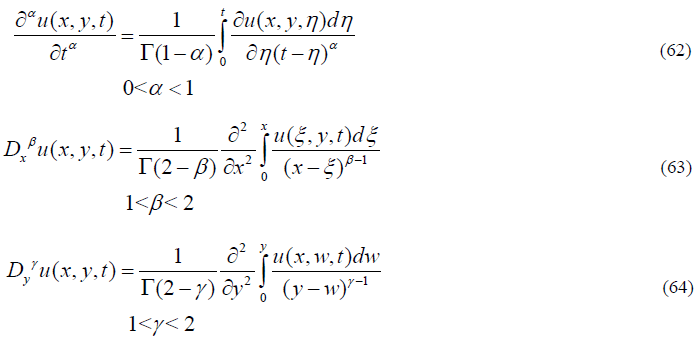
We consider 

Where

q1(x, y) is known function.
We consider  On equation (62), finding α-order partial derivative of t on both sides,
On equation (62), finding α-order partial derivative of t on both sides,
We have:

Where

q2(x, y) is known function.
We consider  On equation (62), finding 2α-order Partial derivative of t on both sides,
On equation (62), finding 2α-order Partial derivative of t on both sides,
We have:

Where

q3(x,y) is a known function.
We consider  On equation (62), finding 3α-order partial derivative of t on both sides,
On equation (62), finding 3α-order partial derivative of t on both sides,
We have:

Where

q4(x,y) is known function.
We have:

qn(x, y) is known function.
By generalized Taylor’s formula:

So, we have the solution of (62):

Nonlinear KdV Equation
We consider the wave equation as following:

We have:

On equation (88), finding 1-order partial derivative of t on both sides,
We have:

On equation (94), finding 1-order partial derivative of t on both sides,
We have

By Taylor’s formula, we get as following:

We have:

So we can get the solution of (86), 
Nonlinear Sine-Gordon Equation
We consider following constant coefficient equation:

We have:

On equation (110), finding 1-order partial derivative of t on both sides,
We have:

On equation (114), finding 1-order partial derivative of t on both sides,
We have:

 is known function.
is known function.
By Taylor’s formula, we get as following:

So, we can get the solution of (107).
Iterative solution of partial differential equations by Taylor formula is important and good method that solve linear and nonlinear partial differential equations and the method also can solve fractional partial differential equations.
References
- Bahri A, Brézis H. Periodic solutions of a nonlinear wave equation. ProcR Soc Edinb A: Math.1980;85(4):313-20.
- Bamberger A, Chavent G, Lailly P. About the stability of the inverse problem in 1-D wave equations—Application to the interpretation of seismic profiles. Appl Math Optim. 1979;5:1-47.
- Barbu V, Pavel NH. Periodic solutions to one-dimensional wave equation with piece-wise constant coefficients. J differ equ. 1996;132(2):319-37.
- Barbu V, Pavel NH. Determining the acoustic impedance in the 1-D wave equation via an optimal control problem. SIAM j control optim. 1997;35(5):1544-56.
- Barbu V, Pavel NH. Periodic solutions to nonlinear one dimensional wave equation with x-dependent coefficients. Trans Am Math Soc. 1997:2035-48.
- Brézis H. Periodic solutions of nonlinear vibrating strings and duality principles. Bull Am Math Soc.1983;8(3):409-26.
- Brezis H, Nirenberg L. Forced vibrations for a nonlinear wave equation. Forced Vib Nonlinear Wave Equ. 1978;31(1):1-30.
